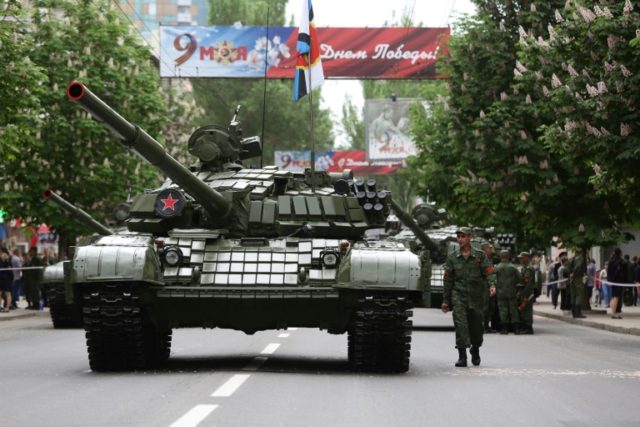Kiev (AFP) – A four-year war between the Ukraine government and breakaway Moscow-backed rebels in its east has left more than 10,000 people dead and strained relations between the West and Russia.
As the separatist regions of Donetsk and Lugansk hold elections on Sunday, criticised as a sham by the United States and European countries, here is some background.
– Rebel republics declared –
In February 2014 pro-Russian president Viktor Yanukovych was ousted after massive street protests over his government’s shunning of closer ties with the European Union.
As a pro-Western government was installed, Russian troops and pro-Moscow forces began seizing ports and cities on the Black Sea peninsula of Crimea in March.
Crimean residents, mostly Russian speakers, voted to join Russia in a referendum that Kiev and the West did not recognise.
Tensions soared in April when pro-Russian demonstrators seized local government buildings in several towns in industrial eastern Ukraine, including Donetsk and Lugansk.
Pro-Russians occupying offices in Donetsk and Lugansk declared their regions to be independent.
Ukraine and its Western allies accuse Russia of instigating the uprising and pouring in arms and troops to bolster the two self-proclaimed republics.
The Kremlin denies the claims despite substantial evidence and has portrayed the war as an internal conflict between an ethnic-Russian minority angered by a “coup” in Kiev and a nationalist government.
– Western backing for Kiev’s operation –
Kiev announced an “anti-terrorist” operation to push separatist fighters out of towns in rebel regions but its ill-equipped troops suffered embarrassing early setbacks.
Kiev has been forced to rely on a patchwork of volunteer battalions that are outside of its control, including far-right nationalists.
Government forces suffered a major defeat in August 2014 against rebel forces who were reinforced by several thousand Russian troops according to Kiev and its Western allies.
The two sides signed a first ceasefire agreement in September 2014 in the Belarussian capital of Minsk, followed by a peace deal in February 2015. This led to a drop in clashes but ceasefires have been violated, with sporadic flare-ups in fighting.
US President Donald Trump in March this year approved the delivery of anti-tank missiles to Kiev.
In July Washington pledged $200 million (170 million euros) to bolster Ukraine’s military.
– ‘Sham’ polls –
The rebel republics are largely dependent on Russian financial aid and Kiev has had no control for the last four years. Both also have their own self-proclaimed presidents.
A number of their military and political figures have been killed over the past years in attacks blamed on infighting. There are also unverified claims of targeted operations by Ukrainian special forces.
In the most prominent assassination, the head of the self-proclaimed Donetsk People’s Republic, Alexander Zakharchenko, was killed in an explosion in August 2018.
His successor will be elected in the November 11 polls, which have been strongly criticised by Western nations.
“While Ukraine takes positive steps to promote peace, Russia is stoking conflict by staging sham ‘elections’,” the US embassy in Kiev wrote on Twitter on Wednesday.
Last month eight European countries said the elections were “illegitimate” and called on Russia to use its clout to halt them.
“Russia must play its part by ending its financial and military support to the separatists and withdrawing its armed forces and military equipment from Ukrainian territory,” their statement said.
– Economic shambles, corruption –
Heavy military spending and the loss of vital industries in the separatist regions has weighed heavily on Ukraine’s economy, which shrank by over 16 percent during 2014 and 2015, while 2016 saw an upturn with 2.5 percent growth.
Efforts to privatise state enterprises and find foreign investors have failed, with some analysts and politicians blaming the country’s ingrained corruption.
Kiev negotiated a large debt writeoff deal with private creditors in 2015 and secured a $17.5-billion rescue loan from the IMF and other aid from foreign allies. Ukraine received only $8.7 billion, however, because of the slow pace of its reforms.
In October the IMF granted a new $3.9-billion-dollar credit line, though Ukraine has not yet received the money, needed for the country to make big debt repayments next year and in 2020.
Ukraine has also received 2.8 billion euros in EU aid since 2014.

COMMENTS
Please let us know if you're having issues with commenting.